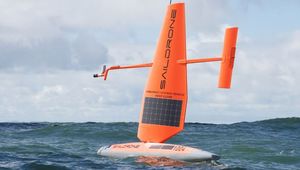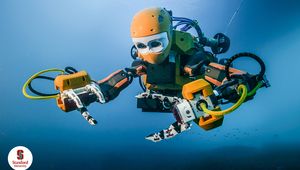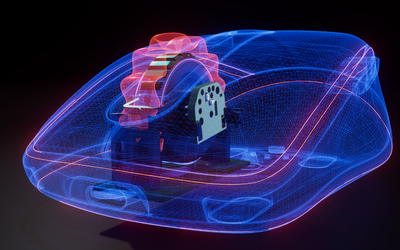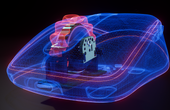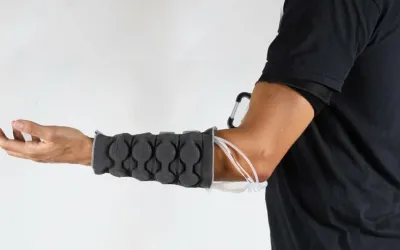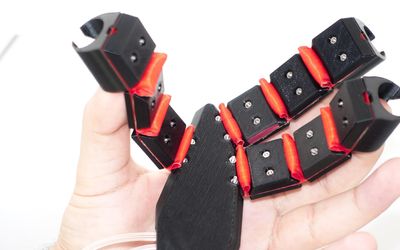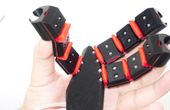Azoteq Haptic - Enabled Sensor, the IQS39x Family
Integrated Haptic and Sensing Solution for Linear Resonant Actuator (LRA) Motors
General
| Product Type | IoT & Connectivity Devices |
| Applications | IoT & Smart Systems, VR, Wearables |
| Key Features | Integrated H-bridge for LRA |
Technical Specifications
| Primary Function | Capacitive/Inductive Sensor + Haptic Driver |
| Haptic Driver Type | Integrated H-bridge for LRA |
| Drive Modes | I²C Mode, PWM Mode, Standalone Mode |
| Communication Interface | I²C (Fast Mode Plus up to 1 MHz), PWM |
| Auto-Resonance Tracking | Yes (Real-time, Closed-loop) |
| Voltage Range | 1.71V – 3.6V |
| Package | QFN20 (3 × 3 × 0.55 mm, 0.4 mm pitch) |
| H-Bridge Configuration | Internal or External |
| PC Software Support | Yes (Configuration & Debugging) |
Overview
The Azoteq IQS39x family integrates touch sensing and haptic feedback into a single, ultra-compact chip, redefining user interface design. These ICs combine capacitive or inductive sensing with a built-in H-bridge driver for Linear Resonant Actuators (LRAs), delivering tactile feedback and premium haptics at a lower cost. The IQS390 and IQS396 offer I2C and PWM modes, enabling real-time motor frequency tuning, waveform customisation, and efficient event-based feedback.
With auto-resonance tracking, internal driver protection, and low power modes, the sensors are ideal for mobile, automotive, gaming, and wearable applications. The IQS396 further enables standalone operation, triggering haptics through sensor actions without external control. Designed for harsh environments and compact footprints (QFN20, 3×3 mm), the IQS39x family enables seamless feedback integration in trackpads, scroll wheels, remote controls, and more. Supported by Azoteq PC software tools, developers can fine-tune every haptic pattern, making precision feel scalable and energy-efficient across devices.
Azoteq Haptic - Enabled Sensor, the IQS39x Family Features
The Azoteq IQS39x family integrates capacitive or inductive sensing with an LRA haptic driver, offering a compact solution for tactile feedback. These ICs provide customisable haptics, real-time resonance matching, and efficient power management for diverse applications. Let’s explore its features in detail:
Integrated Sensing and Haptic Feedback in a Single IC
The IQS39x family combines capacitive or inductive sensing with a built-in H-bridge driver for Linear Resonant Actuator (LRA) motors. This sensor eliminates the need for separate controllers, minimizing BOM complexity. The integration supports standalone and I²C/PWM operation, enabling real-time auto-resonance tracking, selective frequency tuning, and reduced component count. Devices such as the IQS396 and IQS390 offer dual-mode control: standalone for event-triggered haptic feedback and I²C for real-time configurability. This allows designers to create precise and tunable tactile responses in both cost-sensitive and feature-rich devices.
Dual Operation Modes and Real-Time Resonance Tracking
The devices offer dual operational modes: I²C for real-time control and feedback customisation, and PWM (in IQS390) or Standalone mode (in IQS396) for simplified integration. The I²C interface supports communication up to 1 MHz (Fast Mode Plus), featuring selectable LRA drive frequencies, composite waveform configuration, and real-time closed-loop auto-resonance. This closed-loop algorithm dynamically adjusts to match the resonant frequency of LRA motor, ensuring consistent tactile feedback across varying conditions.
Event-Driven Haptic Control and Low Power Design
The IQS396 supports event-based operation using ProxFusion sensor channels to trigger haptic feedback in standalone mode, ideal for applications such as touch-activated controls. Sensitivity and report rates can be fine-tuned via external straps. These modules operate within a supply voltage range of 1.71 V to 3.6 V. Engineered for low-power operation, the IQS390 and IQS396 feature automatic power mode management and ultra-low sleep currents. These characteristics are particularly useful in battery-powered applications like wearables and IoT devices. Wake-on-proximity and intelligent power control extend standby times without sacrificing responsiveness.
Configuration Flexibility and Broad Application Range
Engineers can configure the IQS39x devices using PC-based software tools for waveform design, debugging, and performance tuning. This allows developers to define multiple haptic effects, choose trigger modes (via I²C commands or sensor events), and seamlessly switch between configurations post power-up. Applications include smartwatches, trackpads, scroll wheels, doorbells, keypads, and gaming triggers, where tactile precision is essential. The ICs also offer fire-and-forget haptic triggering, eliminating the need for constant host-side interaction.
Development Tools and IC Portfolio
The IQS39x family includes a range of ICs with specific roles:

IQS390 – haptic driver with customisable feedback and low power modes
IQS391 – plug-and-play haptic driver
IQS396 – ProxFusion sensor + driver for inductive or capacitive touch feedback
IQS397 – Extended capabilities and high noise immunity
Azoteq provides comprehensive developer support, including datasheets, evaluation kits, design guides, and a PC-based GUI for waveform tuning, debugging, and sensor configuration. The compact QFN20 (3×3×0.55mm) package ensures easy integration across various form factors.
Applications
Designed for sealed environments, smart interfaces, and tactile controls, the IQS39x series supports multiple use cases, including:
Smart switches and thermostats with rotational or trigger feedback
Gaming triggers, VR controllers, and mouse wheels with gesture or step-based actuation
Smart appliances, wearables, and trackpads that require multi-level or texture simulation
Force-sensing applications where haptics can be triggered, as with trackpads
The sensors replace mechanical encoders and offer programmable, snap-like feedback even under sealed or waterproof enclosures, making them ideal for harsh or contactless environments.
Where to find it

Azoteq PTY LTD
Pioneer in multi-sensor single IC solutions
References
Azoteq - Internet
